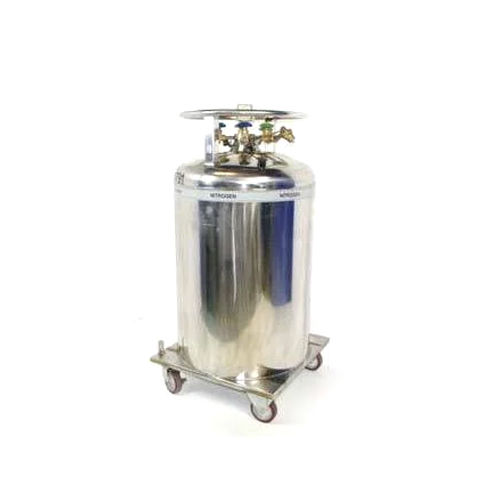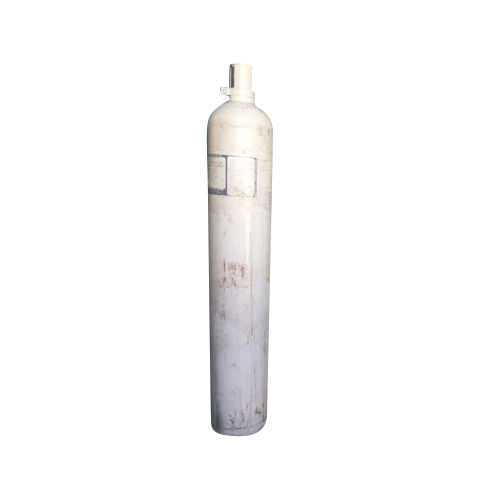Liquid Nitrogen Pressure Cylinder
Product Details:
- Purity High
- Industries Oil And Gas
- Air Gases Nitrogen
- Application Commercial
- Click to View more
Liquid Nitrogen Pressure Cylinder Price And Quantity
- 2000 INR/Piece
- 20 Piece
Liquid Nitrogen Pressure Cylinder Product Specifications
- Oil And Gas
- Commercial
- Nitrogen
- High
Liquid Nitrogen Pressure Cylinder Trade Information
- Cash Advance (CA)
- 1000 Piece Per Month
- 10 Days
- All India
Product Description
A specific container used for the storage and transportation of liquid nitrogen is referred to as a liquid nitrogen pressure cylinder or dewar. With a very low boiling point of -196 degrees Celsius (-321 degrees Fahrenheit), liquid nitrogen is a cryogenic liquid that is frequently utilised in a variety of scientific, medicinal, and industrial purposes.
The following are some crucial characteristics and elements of a liquid nitrogen pressure cylinder:
1. Insulated Cylinder: To reduce heat transmission and preserve the low temperature of the liquid nitrogen, the pressure cylinder is built as a double-walled or vacuum-insulated container. To provide thermal insulation, the area between the inner and exterior walls is either evacuated or filled with insulating materials like foam or perlite.
2. Pressure-Building System: To keep the liquid nitrogen in its liquid state, pressure cylinders for liquid nitrogen frequently have a pressure-building system. A pressure-regulating valve, a pressure release mechanism, and occasionally a pressure gauge make up this system in most cases. The pressure relief device guarantees that the pressure does not exceed safe limits while the pressure-regulating valve regulates the pressure inside the cylinder.
3. The pressure cylinder additionally includes a liquid nitrogen pullout device that enables controlled liquid nitrogen distribution. The liquid nitrogen can be withdrawn from the system using a withdrawal tube, also known as a dip tube, that runs from the top to the bottom of the cylinder. To regulate the flow rate, it might also feature a dispensing valve or a pressure-regulating valve.
4. Liquid nitrogen pressure cylinders are fitted with a number of safety mechanisms to guard against damage or accidents. These might include safety caps, burst discs, and pressure relief mechanisms. These characteristics aid in preventing the building of too much pressure and offer safety in overpressure situations.
5. Liquid nitrogen pressure cylinders are available in a range of sizes and capacities to meet the needs of various applications. A cylinder's capacity is commonly expressed in litres or gallons and can be anywhere between a few and several hundred litres. The capacity of the cylinder determines its size and weight; larger cylinders are bulkier and heavier.
It's vital to remember that liquid nitrogen is extremely cold and that coming into direct contact with flesh or certain materials can result in serious burns or frostbite. When handling liquid nitrogen and its pressure cylinders, proper handling techniques and safety procedures must be observed.
It's critical to observe safety precautions and the handling, storing, and transporting instructions provided by the manufacturer when utilising a liquid nitrogen pressure cylinder. To maintain the integrity and safety of the pressure cylinder, routine inspections and maintenance are also essential.
When working with liquid nitrogen and its pressure cylinders, it is always advised to refer to the manufacturer's paperwork or seek advice from a professional to guarantee correct and safe use.
FAQ
1. What exactly is a pressure cylinder for liquid nitrogen?
Ans - A storage container used to hold liquid nitrogen under pressure is called a liquid nitrogen pressure cylinder. Typically, it consists of an interior vessel encased in an insulation layer and a housing for protection. The vessel is made to keep the nitrogen's pressure and temperature at a safe level while holding a predetermined amount of liquid nitrogen.
2. What safety precautions should be taken when handling pressure cylinders of liquid nitrogen?
Ans - Pressure cylinders for liquid nitrogen need to be handled carefully and in accordance with the manufacturer's recommendations. When working with a liquid nitrogen pressure cylinder, it's imperative to put on safety gear such thick gloves, goggles, and shoes. Additionally, they want to keep their skin away from the liquid nitrogen.
3. How should a pressure cylinder for liquid nitrogen be stored?
Ans - A liquid nitrogen pressure cylinder should be kept out of the direct sunshine, heat sources like radiators, and air conditioning systems. It should also be safely secured to a wall or other sturdy surface and kept in a dry place.
4. How frequently should a pressure cylinder for liquid nitrogen be inspected?
Ans - A liquid nitrogen pressure cylinder needs to be checked frequently for any indications of corrosion, leaks, or other damage. It is advised that the cylinder be examined by trained professionals at least once a year.
5. What is the safest technique to get rid of a pressure cylinder of liquid nitrogen?
Ans - Making contact with a waste removal business that specialises in hazardous materials disposal is the safest approach to get rid of a liquid nitrogen pressure cylinder. They ought to be able to properly dispose of the cylinder in accordance with all regional laws.
Other Products in 'Nitrogen Cylinder' category
 |
THIRUMALAI ATMOSPHERIC PRODUCTS
All Rights Reserved.(Terms of Use) Developed and Managed by Infocom Network Private Limited. |
 Send SMS
Send SMS

